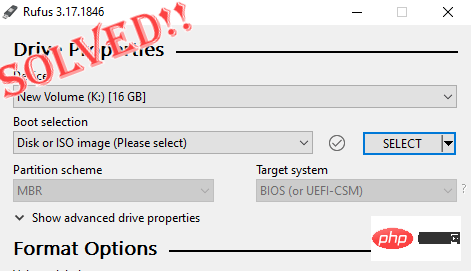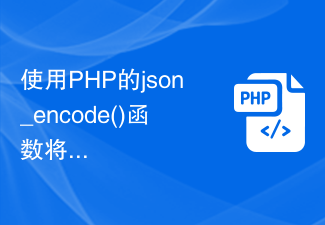
A simple introductory guide to PyCharm code formatting
In the process of writing Python code, good code format is the key to ensuring code readability and maintainability . As a powerful integrated development environment, PyCharm provides convenient code formatting tools that can help developers automatically adjust the format of the code to make it comply with unified coding standards. This article will briefly introduce the basic operations and common functions of PyCharm code formatting, and demonstrate it with specific code examples.
First, open PyCharm and create a new Python project. Create a Python file in the project, for example named "format_example.py". Next, we will demonstrate how to use PyCharm for code formatting.
1. Use shortcut keys to format code
PyCharm provides shortcut keys to help quickly format code. During the process of editing code, you can use the shortcut key combination Ctrl Alt L (Windows/Linux) or Command Option L (Mac) to format the currently edited code.
# 示例代码 def example_func(): message = "hello" # 未对齐的代码 return message
After pressing the shortcut key combination, PyCharm will automatically adjust the indentation and alignment of the code to make it more clear and readable.
# 格式化后的代码
def example_func():
message = "hello" # 对齐后的代码
return message2. Configure code formatting rules
PyCharm also allows users to customize code formatting rules to meet the coding style conventions within the project team. In PyCharm, you can enter Settings -> Editor -> Code Style to configure code formatting options, such as indentation, spaces, newlines, etc.
3. Automatically apply code formatting
In addition to manually formatting code using shortcut keys, PyCharm can also be set to automatically apply code formatting. Find Editor -> Code Style -> Python in Settings, check the "Enable formatter markers in comments" option, and set custom formatting markers:
# fmt: off
def long_function_name(
var_one, var_two, var_three, var_four):
return var_one * var_two -
var_three / var_four
# fmt: onInsert # in the code The code blocks between fmt: off and # fmt: on will not be changed by PyCharm formatting and can retain the original format.
Summary:
Through this simple introductory guide, you can master the basic operations and common functions of PyCharm code formatting, and improve the readability and neatness of the code. Use PyCharm's code formatting tools to make coding more efficient and enjoyable. I hope this article is helpful to you and I wish you happy programming!
The above is the detailed content of A simple introductory guide to PyCharm code formatting. For more information, please follow other related articles on the PHP Chinese website!
 为什么d盘无法格式化Aug 30, 2023 pm 02:39 PM
为什么d盘无法格式化Aug 30, 2023 pm 02:39 PMd盘无法格式化的原因有该盘正在被其他程序或进程使用、该盘上存在损坏的文件系统、硬盘故障和权限问题的。详细介绍:1、D盘无法格式化可能是因为该盘正在被其他程序或进程使用,在Windows操作系统中,如果有程序正在访问D盘上的文件或文件夹,系统将无法执行格式化操作;2、D盘无法格式化可能是因为该盘上存在损坏的文件系统,文件系统是操作系统用来组织和管理存储设备上的文件和文件夹的等等。
 光盘格式化是什么Aug 17, 2023 pm 04:02 PM
光盘格式化是什么Aug 17, 2023 pm 04:02 PM光盘格式化是指将光盘的文件系统进行重建和清空的过程,在光盘格式化过程中,所有的数据都会被彻底删除,同时文件系统会被重新建立,以便在光盘上重新存储数据。光盘格式化可以用于保护数据安全、修复光盘故障和清除病毒等目的,在进行光盘格式化时,需要备份重要数据、选择适当的文件系统,并耐心等待格式化完成。
 提升Java时间日期格式化解析性能的方法Jul 01, 2023 am 08:07 AM
提升Java时间日期格式化解析性能的方法Jul 01, 2023 am 08:07 AM如何优化Java开发中的时间日期格式化解析性能摘要:在Java开发中,时间日期格式化与解析是常见的操作,但是由于时间日期格式复杂多样且处理的数据量庞大,往往会成为性能瓶颈。本文将介绍几种优化Java开发中时间日期格式化解析性能的方法,包括使用缓存、减少对象创建、选择适当的API等。一、引言时间日期格式化与解析在Java开发中非常常见。然而,在实际应用中,由于
 修复:Rufus 无法在 Windows PC 中创建可启动 USB 问题Apr 29, 2023 am 09:19 AM
修复:Rufus 无法在 Windows PC 中创建可启动 USB 问题Apr 29, 2023 am 09:19 AMRufus是一款出色的工具,可以轻松创建可启动的USB驱动器。这个小巧而时尚的工具的效率令人惊叹,通常可以提供无错误的操作。但是,有时创建一个新的可启动USB记忆棒会弹出一些错误消息,从而在刻录过程中绊倒。如果您在使用Rufus时遇到任何困难,您可以按照以下步骤为您的问题找到快速解决方案。修复1–运行驱动器的错误检查器在使用Rufus重试之前,您可以运行驱动器的错误检查器工具来扫描驱动器是否存在任何错误。1.同时按下Windows键+E键打开文件资源管理器。然后,点击“这台电脑
 使用fmt.Sprint函数将多个值格式化为字符串并返回,包括类型信息Jul 25, 2023 am 09:01 AM
使用fmt.Sprint函数将多个值格式化为字符串并返回,包括类型信息Jul 25, 2023 am 09:01 AM使用fmt.Sprint函数将多个值格式化为字符串并返回,包括类型信息在Go语言中,fmt包提供了许多函数用于将数据格式化为字符串。其中,fmt.Sprint函数可以将多个值格式化为字符串并返回。与fmt.Sprintf函数不同的是,fmt.Sprint函数返回一个字符串,而不是一个格式化后的字符串。下面是一个使用fmt.Sprint函数的简单示例代码:pa
 使用PHP的json_encode()函数将数组或对象转换为JSON字符串并格式化输出Nov 03, 2023 pm 03:44 PM
使用PHP的json_encode()函数将数组或对象转换为JSON字符串并格式化输出Nov 03, 2023 pm 03:44 PM使用PHP的json_encode()函数将数组或对象转换为JSON字符串并格式化输出,可以让数据在不同的平台和语言之间进行传递和交换变得更加容易。本文将介绍json_encode()函数的基本用法,以及如何将JSON字符串格式化输出。一、json_encode()函数的基本用法json_encode()函数的基本语法如下:stringjson_encod
 go语言格式化是什么意思Aug 17, 2023 pm 01:49 PM
go语言格式化是什么意思Aug 17, 2023 pm 01:49 PMgo语言格式化是指对代码进行统一的排版和风格处理,可以提高代码的可读性、可维护性和团队协作效率。通过格式化,可以使代码更易读、更易于维护,并减少潜在的错误。在进行Go语言开发时,应该养成良好的格式化习惯,并结合其他技术手段来保证代码的质量和可维护性。
 格式化u盘有什么后果Jan 13, 2021 pm 05:32 PM
格式化u盘有什么后果Jan 13, 2021 pm 05:32 PM格式化u盘的后果:1、清空U盘,会将u盘中的文件全部删除;2、可以消除U盘上的一些逻辑性的错误和非顽固性病毒或流氓程序;3、如果经常性反复格式化u盘,会降低U盘的使用寿命。


Hot AI Tools

Undresser.AI Undress
AI-powered app for creating realistic nude photos

AI Clothes Remover
Online AI tool for removing clothes from photos.

Undress AI Tool
Undress images for free

Clothoff.io
AI clothes remover

AI Hentai Generator
Generate AI Hentai for free.

Hot Article

Hot Tools

mPDF
mPDF is a PHP library that can generate PDF files from UTF-8 encoded HTML. The original author, Ian Back, wrote mPDF to output PDF files "on the fly" from his website and handle different languages. It is slower than original scripts like HTML2FPDF and produces larger files when using Unicode fonts, but supports CSS styles etc. and has a lot of enhancements. Supports almost all languages, including RTL (Arabic and Hebrew) and CJK (Chinese, Japanese and Korean). Supports nested block-level elements (such as P, DIV),

MantisBT
Mantis is an easy-to-deploy web-based defect tracking tool designed to aid in product defect tracking. It requires PHP, MySQL and a web server. Check out our demo and hosting services.

SAP NetWeaver Server Adapter for Eclipse
Integrate Eclipse with SAP NetWeaver application server.

Atom editor mac version download
The most popular open source editor

MinGW - Minimalist GNU for Windows
This project is in the process of being migrated to osdn.net/projects/mingw, you can continue to follow us there. MinGW: A native Windows port of the GNU Compiler Collection (GCC), freely distributable import libraries and header files for building native Windows applications; includes extensions to the MSVC runtime to support C99 functionality. All MinGW software can run on 64-bit Windows platforms.







